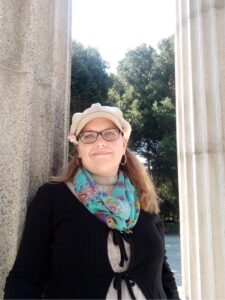Experiences in Oblate Formation
The first part of our second meeting of Oblate Formation session was a history lesson. We started in chapel and then proceeded to a morning brunch where we sat in groups and got some introductions on what would happen for the day. We learned that Sister Louise Inhofer would come and talk with us about Benedictine History and St. Paul’s Priory.
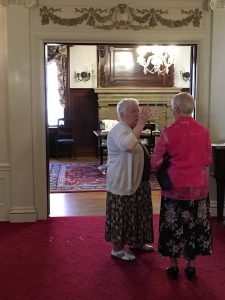
Sister Louise Inhofer
Benedictine History of course begins with St. Benedict way back when the Roman Empire was ending and many often compare the turmoil of that time to what is happening today. These early times were responsible for a kind of revolution. The wisdom St. Benedict developed, referred to as “The Rule” made its way from the ransacked areas of Italy up into England, France, and Germany, and is still being learned and relearned 1500 years later.
The new monasteries became a focal point of community over the years. This new social structure influenced the building of European cities. They were also responsible for the spread of literacy. St. Benedict asserted that all monks, regardless learn to read. Because of this Monasteries grew libraries of manuscripts and this was where many learned to read. Eventually the Monasteries began their work in education, establishing a foundation for western Universities.
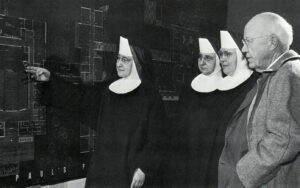
Mother Marcelline Jung OSB walking through architectural plans for Archbishop Murray Memorial High School.
Minnesota itself grew a Benedictine community in its early days and by 1948 the Sisters of St. Benedict in St. Joseph had grown so large; they made the decision to form new communities. This was the beginning of St. Paul’s Priory on Summit Avenue in St. Paul. The Sisters occupied the mansion that is now the Germanic Institute near St. Paul’s Cathedral. 10 years later they had raised enough funds to start a girls’ High School, Archbishop Murray Memorial High School. They purchased 79 acres in relation to this high school and began planning a new monastery nearby.
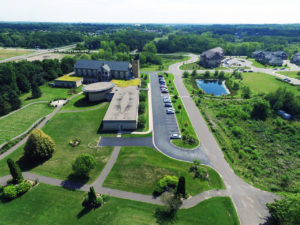
The Sisters built a new monastery building in 2009.
In 1965, they moved to the monastery at 2675 Larpenteur Avenue (now the Tubman building).Today, the Sisters have moved into a smaller building built more to their specifications, which was completed in February of 2009. It is a more intimate space built for developing relationships. Oblates benefit from this space with access to a Monastic library, retreat spaces and workshops, and a location for quiet prayer and community.
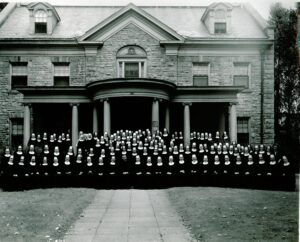
Sisters of St. Paul's Monastery in 1948 at 301 Summit Avenue in Saint Paul
There is so much more to this history. I have left out all the service the Sisters have provided to the city of St. Paul and surrounding communities. Consider it a brief timeline of how the Sisters of St. Benedict came to be in their current space.
I am certainly grateful they are here. Those who visit the Monastery benefit from them in many ways through community, spiritual direction and retreats, spaces for quiet contemplation, prayer, and a deeper connection to God.
_____
Melinda Markell is the Communications & Marketing Coordinator at St. Paul's Monastery

